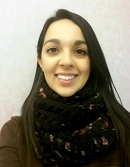Abstract
Aim: To investigate patents related to the invention of robots for use in nursing care. Method: An exploratory, descriptive study with a quantitative approach into the INPI, LATIPAT, Espacenet, USPTO, FPO, CIPO, JPO and WIPO databases, with no restrictions regarding the publication year of patents. Results: 35 patents were identified: 40% related to the creation of robots to aid in the mobility of patients; 28.5% regarding the development of robots to aid daily activities; 23% about robots created for physiological assessment and monitoring of patients; and 8.5% regarding those designed to participate in the process of patients’ rehabilitation. Conclusion: the patents related to the invention of robots for use in nursing care are, mostly, suited to the needs of elderly or disabled people. Also, the world regions more focused on the development of robotics in the field of health care are Asia, Europe and North America.References
Krau SD. Technology in nursing: the mandate for new implementation and adoption approaches. Nurs Clin North Am. 2015 Jun;50(2):11-2.
Institute of Medicine. The future of nursing: leading change, advancing health. Washington: National Academies Press; 2011.
Schoville RR, Titler MG. Guiding healthcare technology implementation: a new
integrated technology implementation model. Comput Inform Nurs. 2015;33(3):99–107.
Prado ML, Backes VMS, Reibnitz KS, Cartana MHF, Abe KL, Rocha PK, et al. A master’s program’s technological production in nursing. Texto Contexto Enferm. 2009 Jul-Set; 18(3):475-81.
Barra DC, Nascimento ERP, Martins JJ, Albuquerque GL, Erdmann AL. Historical evolution and technology impact in the area of the health and the nursing. Rev Eletrônica Enferm. 2006; 8(3):422-30.
Koerich MHAL, Vieira RHG, Silva DE, Erdmann AL, Meirelles BHS. Brazilian technological output in the area of nursing: advances and challenges. Rev Gaúcha Enferm. 2011 dez;32(4):736-43.
Nascimento Jr CL, Yoneyama T. Inteligência artificial em controle e automação. São Paulo: Editora Edgard Blücher e FAPESP; 2000.
Mitzner TL, Chen TL, Kemp CC, Rogers WA. Identifying the potential for robotics to assist older adults in different living environments. Int J Soc Robot. 2014 April 1;6(2):213–27.
Tsai L-W. Robot analysis: the mechanics of serial and parallel manipulators. 1 st ed. New York: John Wiley & Sons; 1999.
Sharts-Hopko NC. The coming revolution in personal care robotics: what does it mean for nurses? Nurs Adm Q. 2014 Jan-Mar;38(1):5-12.
Tao Y, Wang T, Wei H, Peijiang Y. A behavioral adaptation method for an elderly companion robot. In: ICSR 2010 Proceedings of the Second International Conference on Social Robotics; 2010 Nov; Singapore. Berlin: Springer-Verlag; 2010.
Mori K, Scearce C. Robot nation: robots and the declining Japanese population. ProQuest Discovery Guides; 2010 September.
International Federation of Robotics. Service robots case studies. Service robots in nursing homes. International Federation of Robotics. 2011 Jul.
Organização das Nações Unidas para a Educação, a Ciência e a Cultura. Relatório UNESCO sobre ciência 2010: AO atual status da ciência em torno do mundo. Brasil; 2010.
Contini E, Séchet P. Ainda há um longo caminho para a ciência e tecnologia no Brasil. R B P G. 2005 Mar;2(3):30-9.
Conceição CS. Technological change and industrial dynamics in developing economies of Latin America and Asia. Indic. Econ. FEE. 2014;41(3):53-66.
European Commission. Special Eurobarometer 382. Public attitudes toward robots; 2012.
Babaiasl M, Mahdioun SH, Jaryani P, Yazdani M. A review of technological and clinical aspects of robot-aided rehabilitation of upper-extremity after stroke. Disabil Rehabil Assist Technol. 2015 Jan;20:1-18.
Tsui KM, Flynn K, McHugh A, Yanco HA, Kontak D. Designing speech-based interfaces for telepresence robots for people with disabilities. IEEE Int Conf Rehabil Robot. 2013 Jun;2013:6650399.
Schweighofer N, Choi Y, Winstein C, Gordon J. Task-oriented rehabilitation robotics. Am J Phys Med Rehabil. 2012 Nov;91(11 Suppl 3):S270-9.

This work is licensed under a Creative Commons Attribution 4.0 International License.
Copyright (c) 2016 Array

